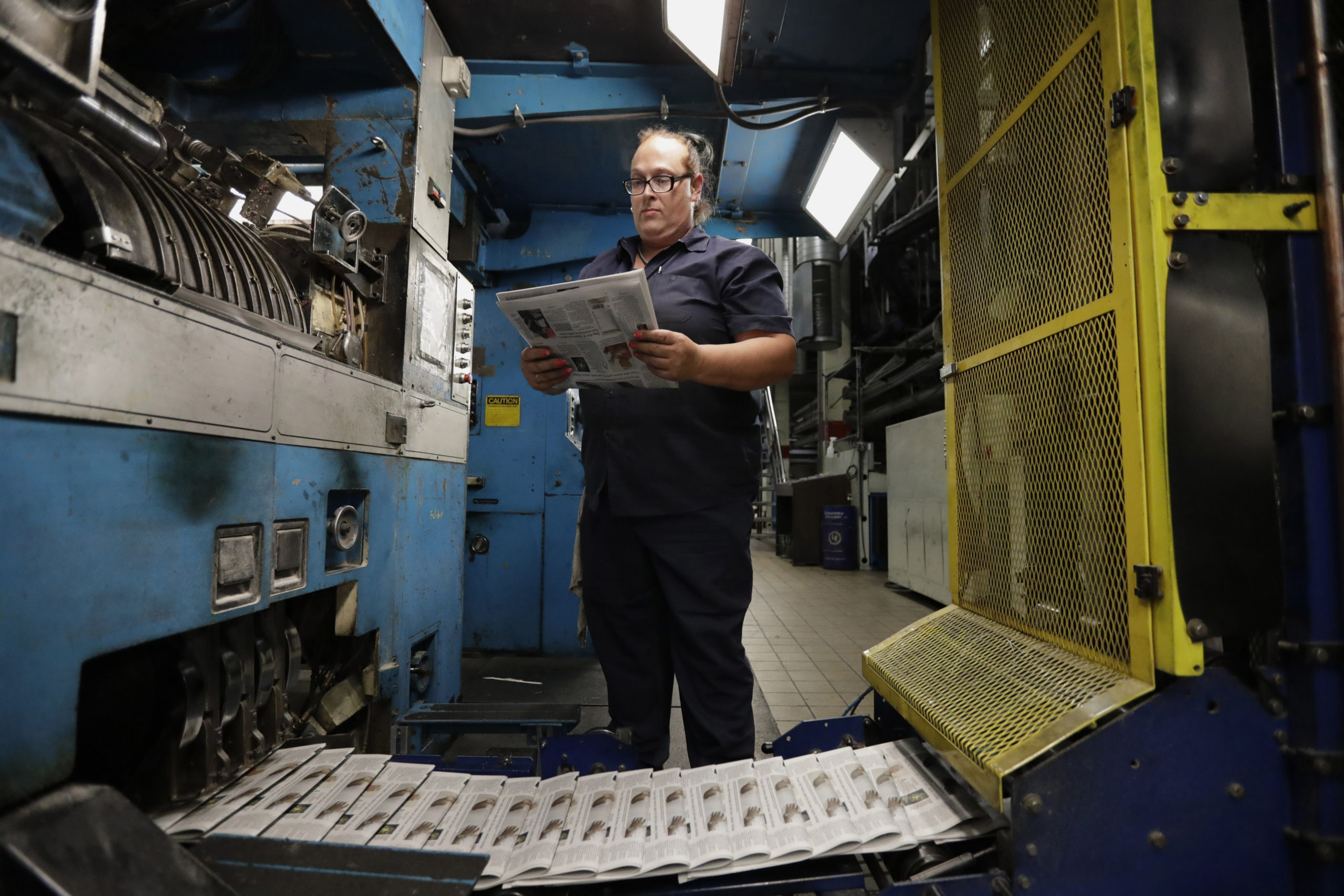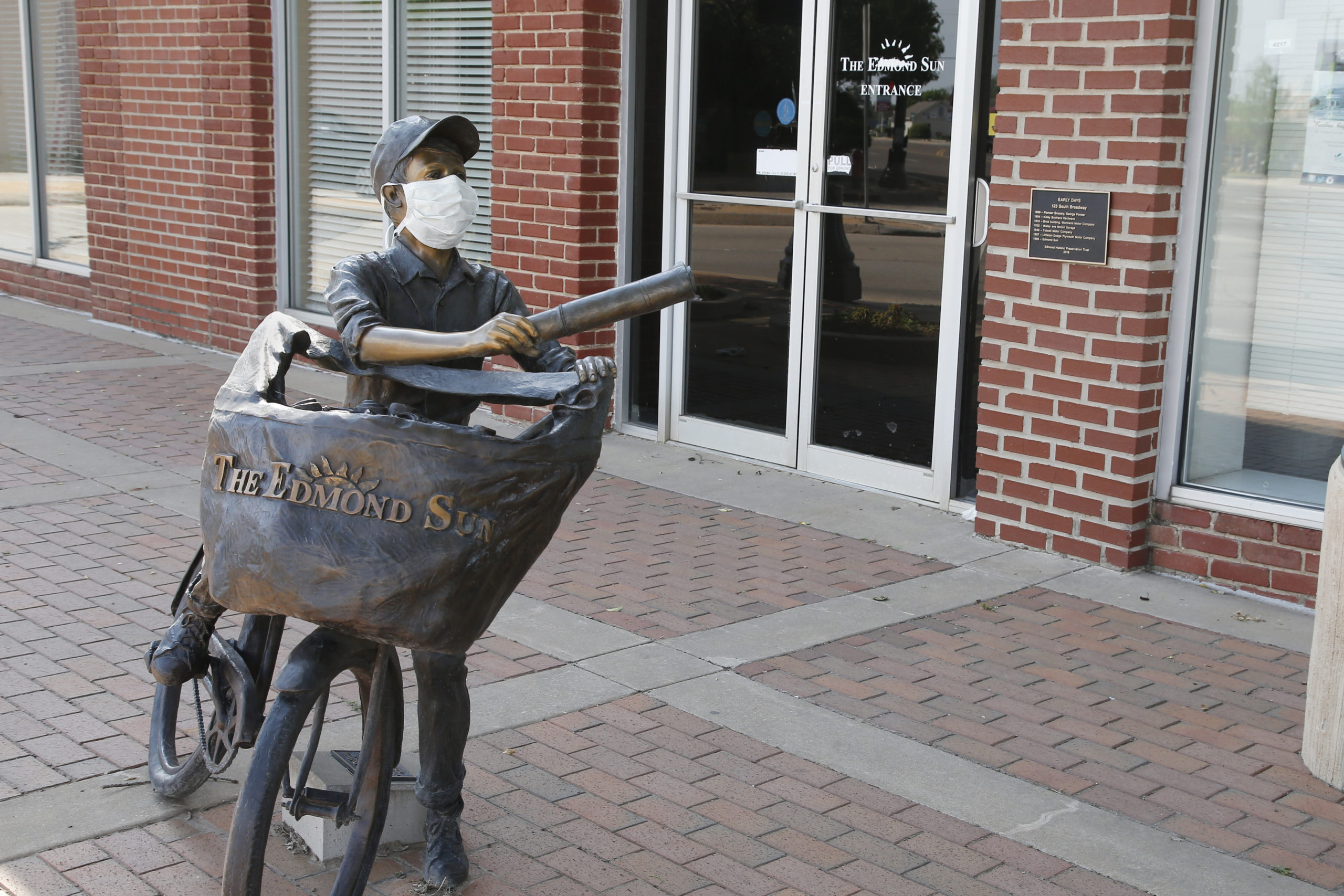There was a time, just a few years ago, that we grimly thought of as layoff season in newsrooms. It was in the fall, ahead of budget projections for the next year. But they happened at other times, too. Sometimes they were huge. Some are memorable for their short-sightedness, like cutting an entire photo staff. Others for how they pierced hope for something new. And, maddeningly, many were notable for their sameness — caused by pivots to video or legacy revenue declines or consolidation.
For the past decade, layoffs have been a fact of life for American journalism, particularly newspapers. Between 2008 and 2019, newspaper staffs shrunk by 51%, according to Pew.
Then, the pandemic hit.
In March, my coworkers at Poynter and I wrote about furloughs, pay cuts and layoffs one story at a time, one day after the next. Then, at the end of March, my friend and former editor Andrew Beaujon sent me a message on Twitter with a suggestion: Start a list to collect it all.
Six days later, we did.
It’s been layoff season ever since.
For most of 2020, I’ve struggled to keep up with the tips in my inbox, to find the layoffs that didn’t make news, and to keep that list updated. I remain in awe of the journalists who reached out and shared tips even as many were figuring out their own next moves.
All along, I’ve held fast to one idea. It’s something my boss, Neil Brown, said early on. We’re not letting these jobs disappear anonymously.
Today you’ll find that our accounting of the pandemic’s toll on the media has been reordered, from doomscroll-by-medium to doomscroll-by-state. I tried to nail down where changes happened at big organizations. And we’re not distinguishing between newsroom jobs and any other positions. Journalism can’t function without the work of press rooms, marketing, business, tech and all the other people who don’t produce news but do support it.
I have no idea when I’ll stop updating the list. But I have had a lot of time to think about what’s on it, what it tells us and what we still don’t know. Here’s what strikes me after 10 months of tracking layoffs.
Among the media jobs we lost a lot of this year — the people who run the presses
2020 brought the end of at least 1,500 newsroom jobs for the people who run the printing presses. We don’t have numbers for the plant jobs lost at all the papers that cut down days of print or stopped printing altogether.
A story I hope to tell next year is what it means — to a town, to an industry and to individual people — when massive shifts like this take place.
The media isn’t just made up of the people who make the news.

Printing plants have been closing for years through consolidation. Pictured in this Tuesday, Aug. 6, 2019, photo, press operator Robin Yeager looks over the registration of a newspaper in Youngstown, Ohio. The Youngstown paper closed in August. (AP Photo/Tony Dejak)
We lost newsrooms through mergers, but not the kind we’re used to
There came a point, while updating the list, that I had enough newsroom closures to write a separate story. First it was 25, then 50, then 60. I’m still updating it.
I made a decision early on to include newsrooms that went through mergers. In most cases, I couldn’t figure out how many people lost their jobs or if these were separate newspapers run by the same people. But in 2020, a lot of communities lost dedicated newsrooms, and it happened as mergers in nearly 20 cities.
This phenomenon isn’t new. Many hyphenated newspapers we have now are the result of newspaper wars that ended in one-paper towns. Between 2011 and 2013, we saw a wave of mergers as newspaper companies bought each other, said Penny Muse Abernathy, a professor at the University of North Carolina and the author of ongoing research into news deserts.
“The mergers are an extreme form and a continuation of the consolidation we’ve had in the industry,” she said.
It’s different now, though, she said, because it’s not just small markets, but mid-sized ones. During the pandemic, we’ve also seen mergers happen between newsrooms owned by the same companies, most notably CNHI (which used to stand for Community Newspaper Holdings, Inc, but now is just CNHI.)
It’s a further loosening of the ties between communities and the people who cover them, who often now live somewhere else, Abernathy said.

A statue of a newsboy on a bicycle delivering newspapers wears a mask outside the offices of the closed Edmond Sun Monday, May 4, 2020, in Edmond, Okla. In a “To Our Readers” column, The Edmond Sun announced it would merge with The Norman Transcript with that newspaper providing its news coverage. The column cited the economic downturn as a result of the coronavirus. (AP Photo/Sue Ogrocki)
For better and worse, the pandemic accelerated change that a decade of digital transformation did not
It started when the Tampa Bay Times announced on March 30 that it was cutting seven days a week of print to two. (Disclosure: Poynter owns the Times and I work with them on a fellowship project.) A lot of newsrooms followed, cutting down print days temporarily, permanently or altogether.
Focusing on building and serving online audiences has been a key shift in the “digital transformation” era of the last decade. And it’s been both tough and scary for newsrooms to build new habits, workflows and ways of thinking.
In a lot of places, the pandemic caused a rip-the-bandaid-off moment.
Shifting to online has its faults, including losing the opportunity to serve communities that rely on print for cost, lack of technology and habit. I counted at least 50 publications that cut print in one way or another, through temporary cuts, decreases in days or the total shift to online.
In Florida and Arkansas, at least, the shift led to a surprising result. My colleague, Rick Edmonds, wrote about the success of e-editions at the Tampa Bay Times and The Arkansas Democrat-Gazette, where the e-edition was valuable before the pandemic.
“Layoffs are driven by revenue losses. Both had been significant for years before the pandemic; then remaining print advertising fell by almost half with the economic slowdown,” Edmonds told me. “And the further bad news is that some of those who left in 2020 are not planning to come back in 2021. Two upsides — newsrooms were able to show just how essential they are to their local communities, especially in the early stages of the pandemic. Plus the pace of necessary change was accelerated. Initiatives that were expected to spread out over a year or two got done in a month or two.”

Screenshot, The Bennington (Vermont) Banner’s announcement of cutting down print days.
Newsroom leaders need to follow the transparency standards they demand from their community institutions
There are a lot of examples in the layoffs list of newsrooms that reported on their own layoffs and on the companies that own them. I have personally heard from editors who covered their own news.
But we did not always get that level of transparency from some big media companies, including Gannett, Lee, and MediaNews Group.
I get that these places are running businesses, but they’re running businesses where the currency is sunlight and transparency. Anything less hurts their own credibility.
Joy Mayer, director and founder of Trusting News, agrees.
“Journalists demand accountability and transparency from the institutions we cover,” she said. “We also enjoy it when our communities share our skepticism of and high expectations for those institutions. But news organizations are themselves a powerful institution, influencing communities’ collective stories and shared understanding. Too often, we act as if we’re above scrutiny and beyond questioning.”
Newsrooms deserve to be held accountable for our ethics, choices, value and priorities, she said, including our news coverage, business decisions and staffing.
“We should tell our audiences when people come and go from the news operation, and we should invite and answer questions about those choices. Sunlight is the best disinfectant, right? Open up the curtains, and invite that sunlight in.”
Where there’s a lack of information, people fill in the gaps with their own assumptions, Mayer added.
“If we don’t tell the story of our work, community members will guess about why something has happened. And their guesses will likely not be flattering.”
There’s so much we don’t know.
We can see where people were laid off. But who got laid off?
What impact did the layoffs have on journalists of color, young journalists, veteran journalists, women?
“Is this a repeat of 2008’s economic downturn, when it was ‘last hired, first fired’?” asked my colleague, Doris Truong. “That mantra led to thousands of journalists of color leaving the industry. We know that JOCs — particularly female JOCs — are typically underpaid compared with white male counterparts of equivalent experience. What makes me hopeful is that multiple prominent newsrooms have added top-level editors whose priority is to elevate diversity, equity and inclusion. If they are given the resources to be successful in those roles, the impact in 2021 will be a slew of hires who can report on diverse communities with greater accuracy and compassion.”
And what kinds of jobs were impacted?
“We also don’t know about the impact of the layoffs and buyouts on the digital talent, which many would assume are safe from this sort of thing,” said my Poynter colleague, Samantha Ragland. “But not only is this not the case, but in my circle of millennial cuspers, especially women, the buyouts offered this year were a real opportunity to reset.”
That makes her wonder: Did the uncertainty of the industry push them out or was it something more?
“Are they doing work they’re proud of? Are they having an impact? Are they feeling heard? For many, the admirable, democratic hero work of being a journalist isn’t enough to keep bright, innovative talent in the newsroom anymore. I’m curious to see what new positions trend in 2021 — especially in adjacent fields of nonprofit, education and philanthropy that support the industry without the corporate structures, layoffs and buyouts.”
What job cuts and closures didn’t make the list?
I captured as many as I could confirm, but I know I missed a lot. If you see omissions, please let me know.
Finally, what’s the actual number of job cuts due to the pandemic?
I get this question a lot. People point to The New York Times April number of 37,000, but that number includes everything — layoffs, pay cuts and furloughs. Axios reported a total of 30,000 in early December based on a report from Challenger, Gray & Christmas, Inc.
I only have access to my own data, and here’s what I can tell you about it: It’s incomplete.
I counted a little more than 4,500 layoffs and job cuts from my list. Now add 485 Gannett business-side jobs which are headed to India and we’re close to 5,000. But with 301 entries in my database, I only have numbers for 109 of them and count another 55 entries with layoffs or buyouts and no numbers. Now add the 60-plus newsrooms that have closed and the people who lost their jobs because of it.
This is why, when reporters ask me if the other numbers out there are correct, or what my count is, my answer is always this — I just don’t know. Yet. But I’ll keep reporting until I do.







